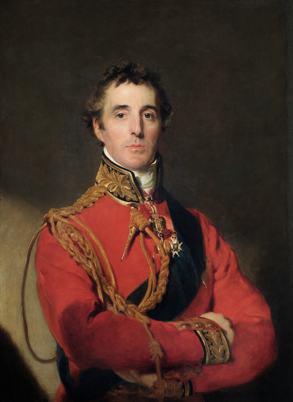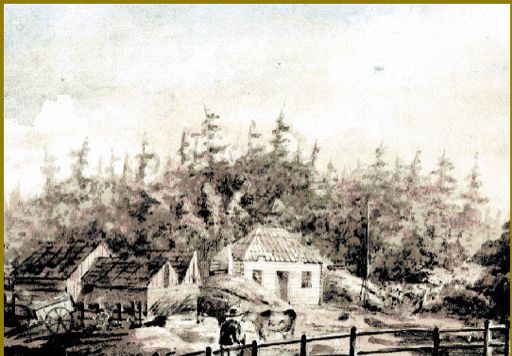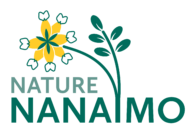Nature Nugget – April 19, 2018
By Michael Stebbings
Cytisus Scoparius and a Scottish Army Captain { Sit eesus scar parius}
Captain Walter Colquhoun Grant was born of a military family in Edinburg 1822. He served in Second Dragoons, Royal Scots Greys Regiment, British Army. In 1845, he purchased rank of Captain, at the age of 23, becoming the youngest Officer in the army.

In 1849 Queen Victoria granted a ten year exclusive trading licence to Hudson’s Bay Company of Vancouver Island on condition that it develop and settle the island. HBC opened up the colony for settlement but there wasn’t much interest as settlers were required to bring workers to work the land.
Because his career in the army had cost him his fortune, Captain Grant saw an opportunity. He decided to become a colonist, and brought 200 acres from HBC at £1/acre in area now called Sooke
Grant took it on enthusiastically. He recruited some workers and persuaded the Church of Scotland to send a minister to look after the children’s education; he himself arriving in 1849. He was the first non-HBC pioneer settler in the colony. He started to clear the land, built a sawmill driven by water.

Then he turned his hand to collecting data about flora and fauna of the Island, with a map of Vancouver Island he had drawn by John Arrowsmith. This was later published in the Journal of the Royal Geographical Society. At that time, he reported the population of the Island as 450; 300 in Fort Victoria and another 125 in Nanaimo with 25 in Fort Rupert (totally ignoring the native peoples).
He is credited with bringing cricket to the colony. He also gained some notoriety by shooting a cow, believing it to be a buffalo.
To make some money and pay off his debts, but with no skills whatsoever he got a job as Surveyor for HBC at a salary of £100 per year. He achieved practically nothing in a year, and instead he resigned and went gold prospecting in Oregon.
In 1850 after a trip to Hawaii he brought back some seeds which he planted on his estate with the nostalgic hope of emulating the golden covered hills of his Scottish homeland.
Three years later, still broke, he decided to sell his land; in 1853 he left the colony and returned home. Still an army officer he then saw action in the Crimea War in Turkey, and later in India where he eventually died at the age of 39.
Regrettably, few understood the impact his seedlings were going to have. Nobody realized this beautiful golden flowered plant, the perennial shrub, Cytisus scoparius, had an invasive nature. Highway departments planted Scotch broom as a bank stabilizer because of its deep root structure and rapid growth. Humans encouraged its spread too. It quickly spread up the east coast of Vancouver Island before invading the Gulf Islands and mainland.
Skip forward 1½ centuries!
Nowadays, Scotch Broom (Cytisus scoparius, pea family) can be seen everywhere, lining local roadways and cleared areas of land. Although pretty when in bloom, each plant has been estimated to produce up to 18,000 seeds – seeds that are known to survive dormant in the ground for many years through drought and fire.
Now we know that stands of Scotch Broom can disrupt local streams and overtake native plants and wildflowers. Scotch broom, easily spotted with its bright yellow flowers is found everywhere, in open areas along roadsides and power lines. This weed is a strong competitor with native plants including those within declining Garry oak ecosystems and newly planted coniferous forests. It competes with native species for available light, moisture and nutrients, especially on disturbed sites. There are no known natural predators for this weed, therefore allowing it to spread throughout southern B.C. and other parts of North America. It does particularly well in recently disturbed areas, and for this reason it continues to increase in areas of Vancouver Island and the Lower Mainland where land development is intensive.
Here we are today. This invasion which started way back in 1850 now faces a vast army fighting back. Governments have passed laws outlawing the weed; AND the Broombusters have arrived.
Broombusters is a grassroots organization started in 2006 in response to the growing concern about the spread of this aggressive invasive species on Vancouver Island and lower BC mainland.
A volunteer group, they go out in late spring every year to attack the enemy, Scotch broom. They clear their own and neighbours’ properties, roads, walkways and parks. They do this while the broom is at its most vulnerable, while it’s blooming.
Broombusters’ mission is to educate and empower communities to contain the spread of Scotch Broom. Their strategy consists of education, inspiration, organization, media involvement and volunteer support focussed on an intense 6 week period in spring! Their aim is to –
- Limit the
spread of Scotch broom; prevent new infestations.
- Enable, connect, and empower people to take on the task of controlling Scotch broom.
- Inspire and offer opportunities for community involvement and environmental stewardship
- Serve as a liaison between government, media, communities and individuals
- Provide information, publicity, a website, tools and support to help communities be successful.
- Protect the native plant species and animals of British Columbia; to protect and reclaim pastures, meadows and forest lands.
Do you want to help?
Call your friends. Arrange pick up, with Broombusters or your municipality. Pick a day in April or May. Put on a warm coat, gloves and strong shoes, and go out and join the attack. Have some fun! Cut the broom with loppers at ground level or slightly below. Tap down soil around the roots.
Just one caveat: Broom is a fire hazard, before and after it is cut. BEFORE you start you must make plans for removal of the cut broom.
There are all sorts of groups with resources to help.
Check out –
- Invasive Species Council of BC
- Coastal Invasive Plant Committee
- Islands Trust Fund
- Garry Oak Ecosystems Recovery Team
- Nature Conservancy of Canada.
Then there is –
- BC Weed Control Act Noxious
- Weed Bylaw in Saanich.
